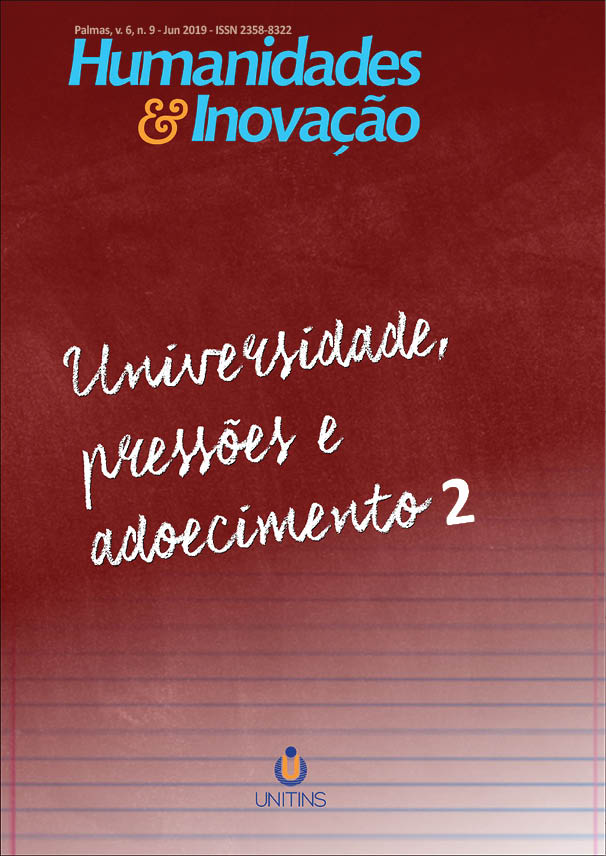ANXIETY PREDICTION BASED ON INTELLECTUAL RUMINATION AND IRRATIONAL BELIEFS IN STUDENTS OF ISLAMIC AZAD UNIVERSITY, HAMADAN BRANCH
Resumo
The purpose of this study was to predict anxiety based on intellectual rumination and irrational beliefs in students of Islamic Azad University of Hamadan. The method used in this study was descriptive-correlational method. The statistical population consisted of all students of Islamic Azad University of Hamadan during the academic year 2017-2018; of these, 380 were selected by relative sampling method. Questionnaires were used for data collection, Beck Anxiety Questionnaire, Trainer Hypervisor, Gonzalez, and Nulen-Huximaa Questionnaire and Four-factor Irrational Beliefs Questionnaire in Ahvaz. Findings showed that intellectual rumination and irrational beliefs can predict anxiety in students. Therefore, it can be said that intellectual rumination and irrational beliefs may be anxious for students by decreasing positive emotional states and increasing emotional feelings.
Referências
Amiri, Mohammad and Pourhossein, Reza. (2010). The Relationship between Irrational Beliefs with Stress, Anxiety and Depression in Secondary and Third Grade Secondary School Students in Malayer High School. Master's thesis, University of Tehran, Faculty of Psychology and Social Sciences.
Bagherinejad, Mina, Salehi Fadri, Javad and Tabatabai, Seyyed Mohammad. (2010). Relationship between intellectual rumination and depression in a sample of Iranian students. Educational studies and psychology, 11 (1), 38-21.
Bairami, Mansour, Nemati Sogli Tape, Fatemeh. Razmi, Shahriar. (2015). The Effectiveness of anger management training on the reduction of symptoms of anxiety, depression and anger in cardiac patients after surgery. Clinical Psychology Studies, 6 (6), 71-11.
Belloch, A., Morillo, C., Luciano, J. V., García-Soriano, G., & Carrio, C. (2010). Dysfunctional belief domains related to obsessive-compulsive disorder: A further examination of their dimensionality and specificity. The Spanish Journal of Psychology, 13(1), 376-388.
Bolliger, D. U., & Halupa, C. (2012). Student perceptions of satisfaction and anxiety in an online doctoral program. Distance Education, 33(1), 81-98
Boyacioglu, N., Kucuk, L. (2011). Irrational beliefs and test anxiety in Turkish school adolescents. The Journal of School Nursing, 27(6), 447-454.
Bridges, K. R., & Harnish, R. J. (2010). Role of irrational beliefs in depression and anxiety: a review. Health, 2(08), 862.
Cohen, N., Mor, N., & Henik, A. (2015). Linking executive control and emotional response: A training procedure to reduce rumination. Clinical Psychological Science, 3(1), 15-25.
David, D., Lynn, S. J., & Ellis, A. (Eds.). (2009). Rational and irrational beliefs: Research, theory, and clinical practice. Oxford University Press
Ebadi, Gholam Hossein, Trustee, Mokhtar. (2005). Investigating the Factor Structure of Jones's Irrational Beliefs Test in Ahwaz. Journal of Applied Psychology, 23 (2), 92-73.
Fulton, J. J., Marcus, D. K., & Merkey, T. (2011). Irrational health beliefs and health anxiety. Journal of clinical psychology, 67(6), 527-538.
Gomes, V. M., Silva, M. J. P. D., & Araujo, E. A. C. (2008). Gradual effects of therapeutic touch in reducing anxiety in university students. Revista brasileira de enfermagem, 61(6), 841-846.
Hyland, P., Shevlin, M., Adamson, G., & Boduszek, D. (2014). The organization of irrational beliefs in posttraumatic stress symptomology: Testing the predictions of REBT theory using structural equation modelling. Journal of Clinical Psychology, 70(1), 48-59.
Joormann, J. (2006). Differential effects of rumination and dysphoria on the inhibition of irrelevant emotional material: Evidence from a negative priming task. Cognitive therapy and research, 30(2), 149-160.
Jose, P. E., Wilkins, H., & Spendelow, J. S. (2012). Does social anxiety predict rumination and co-rumination among adolescents?. Journal of Clinical Child & Adolescent Psychology, 41(1), 86-91.
Kaviani, Hossein, Mousavi, Ashraf Sadat. (2008). Psychometric properties of Beck anxiety inventory in Iranian age and sex. Journal of Faculty of Medicine, Tehran University of Medical Sciences. (66) 136-140.
Lovell, G. P., Nash, K., Sharman, R., & Lane, B. R. (2015). A cross‐sectional investigation of depressive, anxiety, and stress symptoms and health‐behavior participation in Australian university students. Nursing & health sciences, 17(1), 134-142.
Luminet, O. (2004). Measurement of Depressive Rumination and Associated Constructs. Depressive In C. Papageorgiou & A. Wells (Eds.), Depressive Rumination: Nature, Theory and Treatment (pp. 187-215). New York: Wiley.
McLaughlin, K. A., & Nolen-Hoeksema, S. (2011). Rumination as a transdiagnostic factor in depression and anxiety. Behaviour research and therapy, 49(3), 186-193.
Nazemi, Aaliyah, Kazemi, Reza; Aliizadeh Asl, Roghayeh and Nazemi, Ahd (2015). Relationship between intellectual rhythm with general anxiety in adolescents. Third National Conference on Psychology and Behavioral Sciences. Tehran.
Rector, N. A., Antony, M. M., Laposa, J. M., Kocovski, N. L., & Swinson, R. P. (2008). Assessing content domains of repetitive thought in the anxiety spectrum: Rumination and worry in nonclinical and clinically anxious samples. International Journal of Cognitive Therapy, 1(4), 352-377.
Sadock, B. J., & Sadock, V. A. (2011). Kaplan and Sadock's synopsis of psychiatry: Behavioral sciences.clinical psychiatry. Lippincott Williams & Wilkins.
Spielberger, C. D., Anton, W. D., & Bedell, J. (2015). The nature and treatment of test anxiety. Emotions and anxiety: New concepts, methods, and applications, 317-344.
Starr, L. R., & Davila, J. (2012). Responding to anxiety with rumination and hopelessness: mechanism of anxiety-depression symptom co-occurrence?. Cognitive therapy and research, 36(4), 321-337.
A submissão de originais para este periódico implica na transferência, pelos autores, dos direitos de publicação impressa e digital. Os direitos autorais para os artigos publicados são do autor, com direitos do periódico sobre a primeira publicação. Os autores somente poderão utilizar os mesmos resultados em outras publicações indicando claramente este periódico como o meio da publicação original. Em virtude de sermos um periódico de acesso aberto, permite-se o uso gratuito dos artigos em aplicações educacionais, científicas, não comerciais, desde que citada a fonte (por favor, veja a Licença Creative Commons no rodapé desta página).











